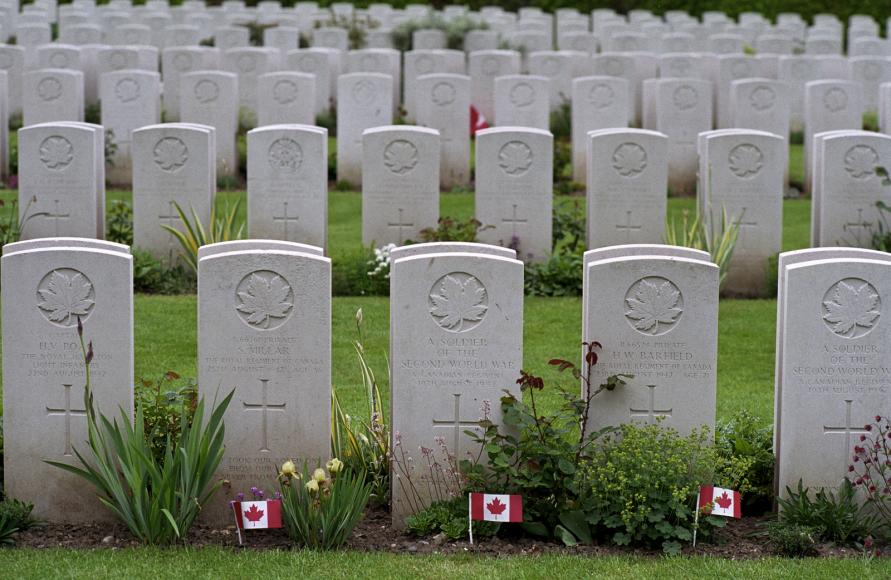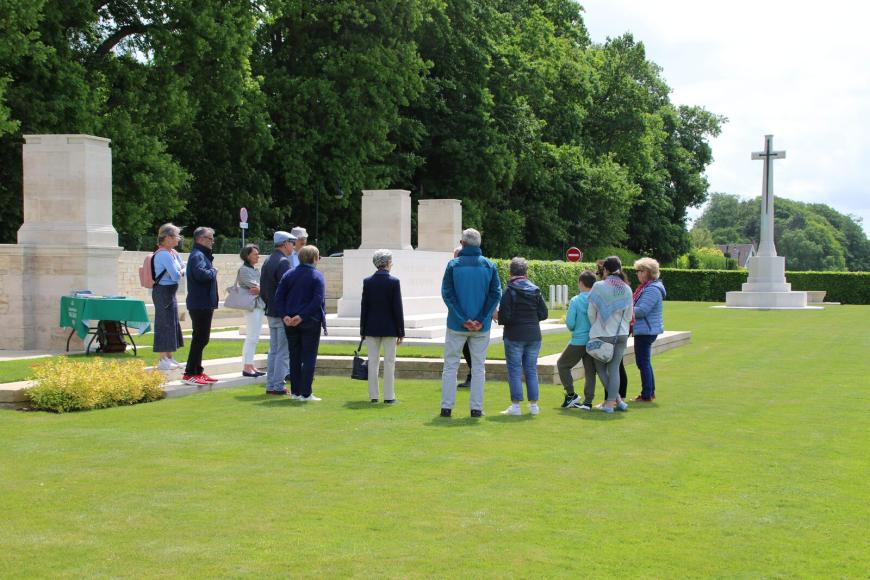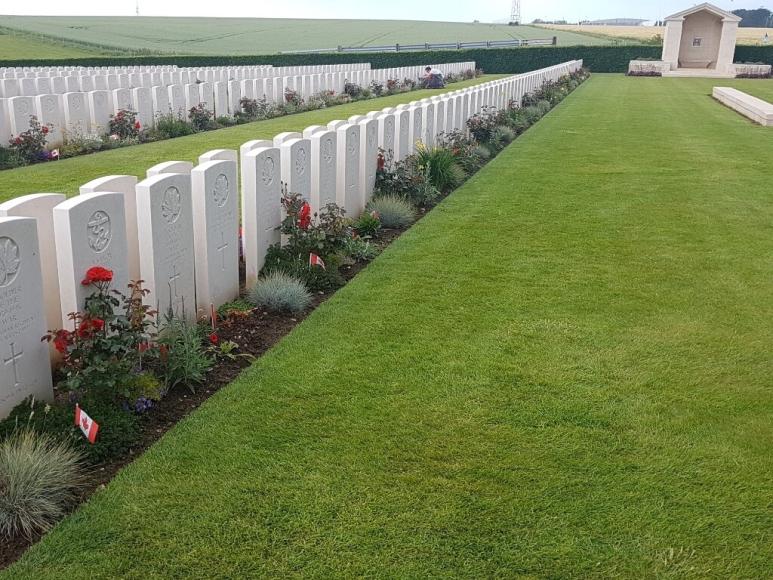Dieppe Canadian War Cemetery
To mark the 80th anniversary of Operation Jubilee, we take a look at Dieppe Canadian War Cemetery, in Hautot-sur-Mer, Normandy.
The Dieppe Raid, or “Operation Jubilee”, took place on the morning of 19 August 1942 on the Normandy coast. It was a landing from the sea, aimed at destroying the German coastal defences of Festung Europa (Fortress Europe), protected by the “Atlantic Wall”. Nearly 6 000 soldiers were deployed, including 4 963 Canadians of the 2nd Infantry Division, 1 125 Britons, 15 commandos of the Free French Forces and 50 US rangers.
Unfortunately, the raid lacked the expected element of surprise, and the German forces firmly defended their positions. The Commonwealth troops suffered many casualties; the Canadians lost a quarter of their troops, making it the bloodiest operation of the war for Canada. Today, a large number of them are buried in Dieppe Canadian War Cemetery, maintained by the Commonwealth War Graves Commission (CWGC).

Dieppe Canadian War Cemetery
© CWGC
Set up in 1917, the CWGC preserves the memory of over 1.7 million Commonwealth servicemen and women killed in the two world wars. Dieppe Canadian War Cemetery is one of 23 000 CWGC sites in more than 150 countries and regions across the world. It is the CWGC’s first Second World War cemetery, and also the only one to have been created by German soldiers, the Allies having been forced to retreat and leave behind their dead. The gravestones were placed back to back in long, double rows, typical of German cemeteries but quite unusual in Commonwealth cemeteries. When Dieppe was retaken in 1944, the Allies did not change the layout of the graves. The cemetery was redesigned and renovated by architect Philip Hepworth, and reopened in 1949.
Dieppe Canadian War Cemetery
© CWGC
It holds the bodies of 957 Allied soldiers, including 707 Canadians; 192 could not be identified. While the cemetery consists primarily of Canadian and British soldiers who died in Operation Jubilee, other men and one woman are also buried there. Dieppe was home to a military hospital in 1939 and 1940, where a number of soldiers succumbed to their wounds. There are also a great many graves of Allied pilots, because during the Second World War the department of Seine Maritime lay on the flight path to Germany and its factories, and was therefore a target for Allied bombing raids. In addition, the regiments that took part in the raid of 1942 were the same ones that liberated Dieppe in August 1944, which means there are gravestones for soldiers from the same regiments but who died two years later.
Pour en savoir plus :
- Dieppe Canadian War Cemetery, Hautot-Sur-Mer | Cemetery Details | CWGC
-
On 18 and 19 August 2022, from 9 am to 5 pm, join Poppy and Jérémy, two Anglo-French CWGC guides, to find out about the history of the cemetery and the fates of those buried there.
Enquiries: +33 (0)3 21 21 52 75



